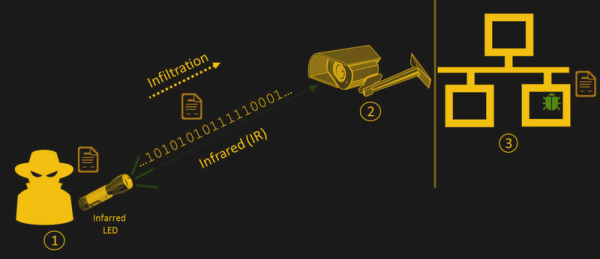What high-tech, ultra-secure data center would be complete without dozens of video cameras directed both inward and outward? After all, the best informatic security means nothing without physical security. But those eyes in the sky can actually serve as a vector for attack, if this air-gap bridging exploit using networked security cameras is any indication.
It seems like the Cyber Security Lab at Ben-Gurion University is the place where air gaps go to die. They’ve knocked off an impressive array of air gap bridging hacks, like modulating power supply fans and hard drive activity indicators. The current work centers on the IR LED arrays commonly seen encircling the lenses of security cameras for night vision illumination. When a networked camera is compromised with their “aIR-Jumper” malware package, data can be exfiltrated from an otherwise secure facility. Using the camera’s API, aIR-Jumper modulates the IR array for low bit-rate data transfer. The receiver can be as simple as a smartphone, which can see the IR light that remains invisible to the naked eye. A compromised camera can even be used to infiltrate data into an air-gapped network, using cameras to watch for modulated signals. They also demonstrated how arrays of cameras can be federated to provide higher data rates and multiple covert channels with ranges of up to several kilometers.
True, the exploit requires physical access to the cameras to install the malware, but given the abysmal state of web camera security, a little social engineering may be the only thing standing between a secure system and a compromised one.












